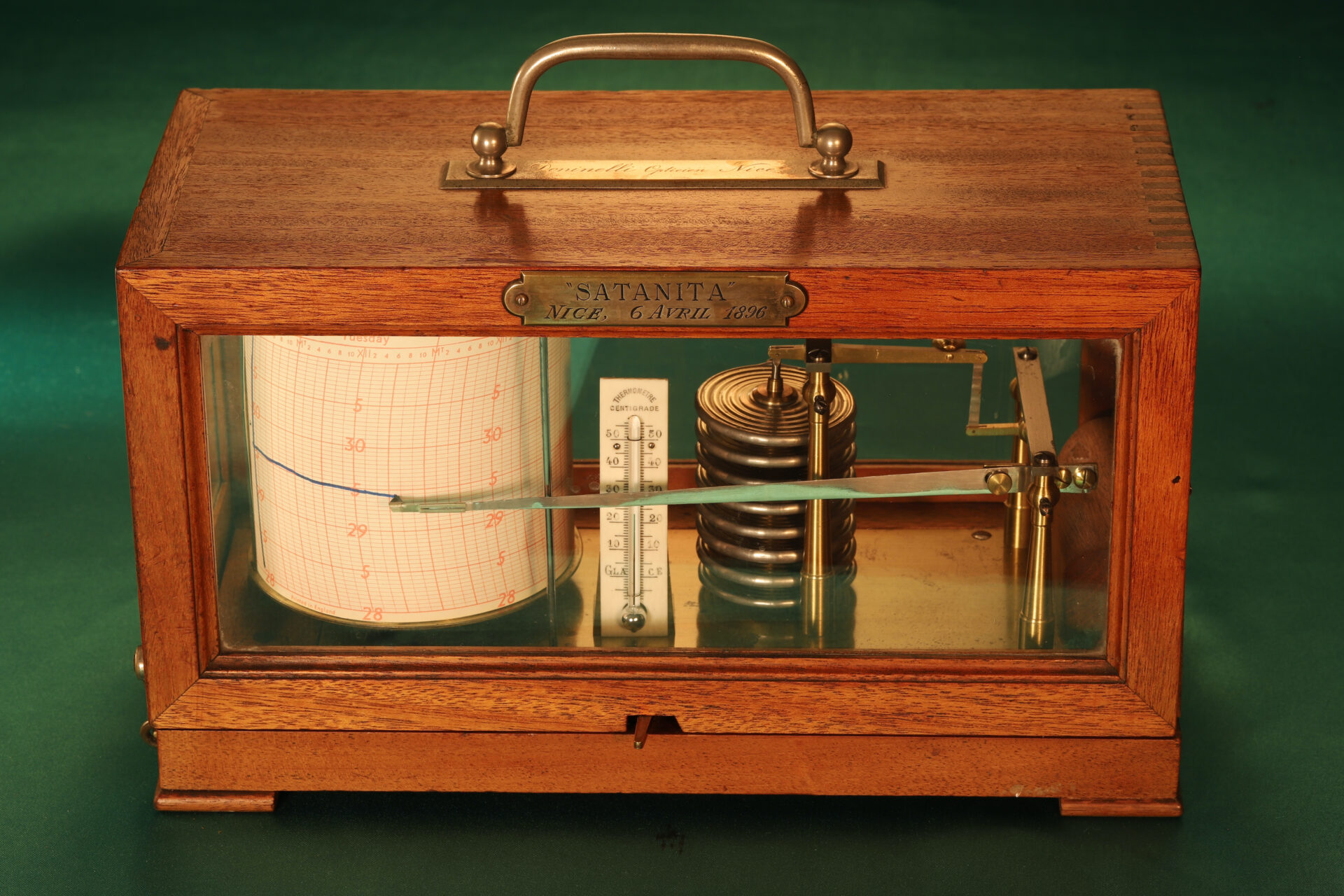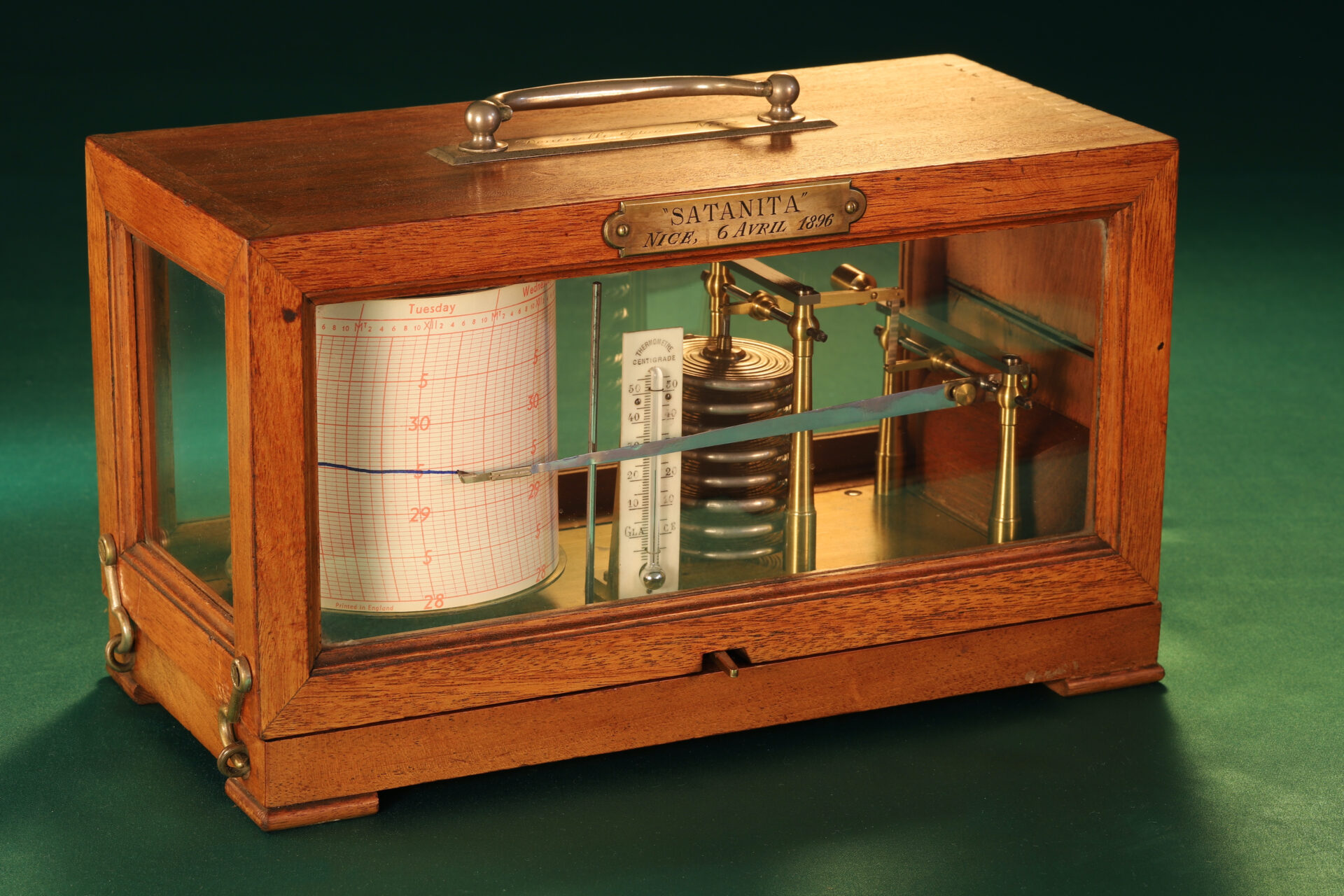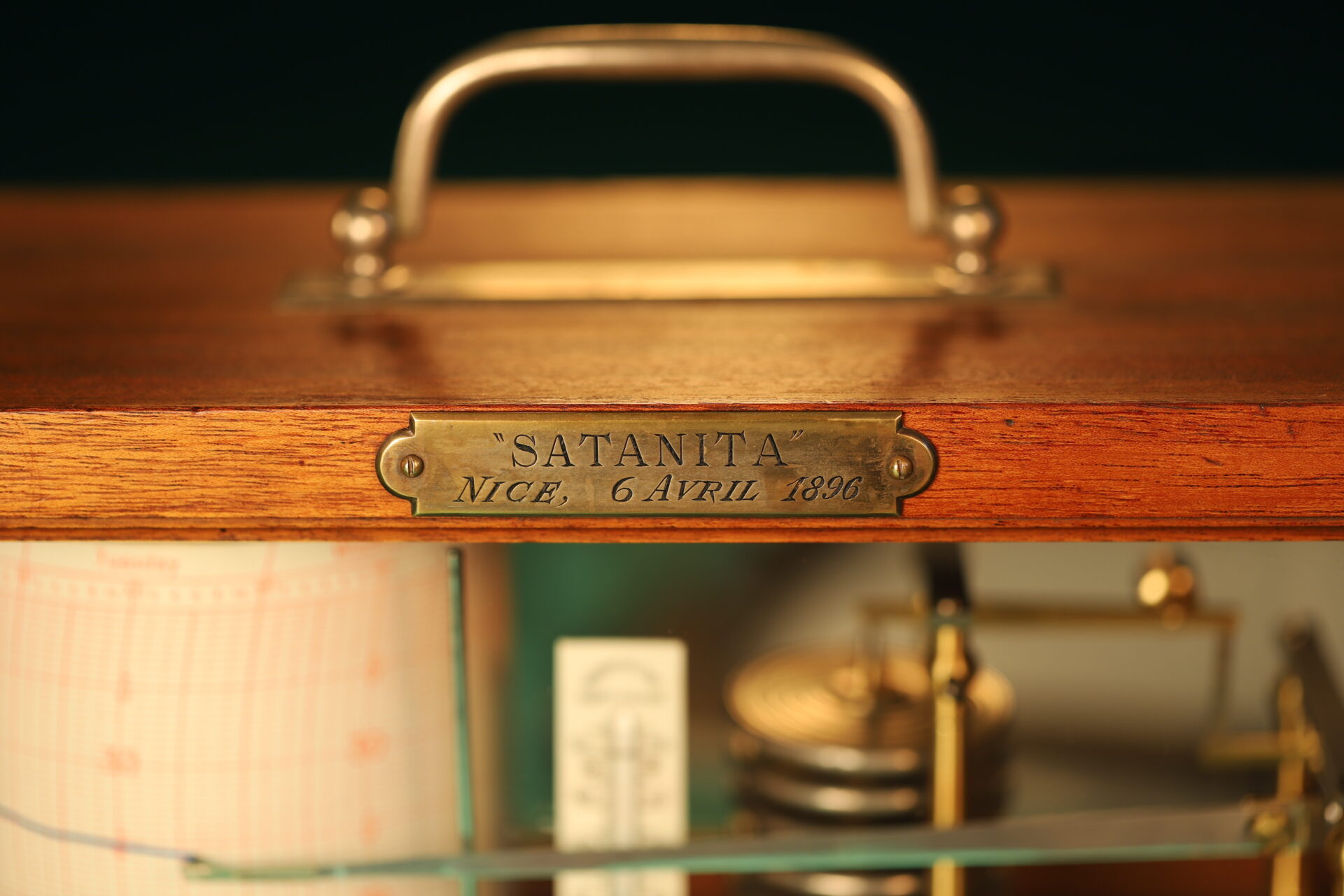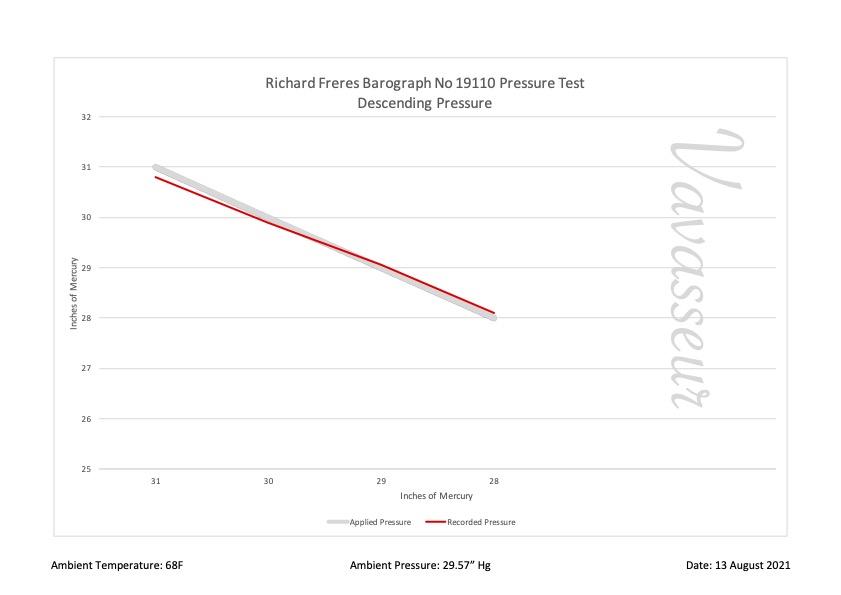A very good mahogany cased drum barograph recorder by Richard Frères No 19110, retailed by Danielli, Nice, awarded to the First Class racing yacht Satanita in 1896
Drum barograph having precision eight cell conventional pattern barometric movement raised on four turned pillars over a full length chassis struck with Richard Frères logogram and serial no. “19110,” thermometer, the register calibrated in degrees Centigrade with a range from -8 to 56. Arrestor bar with external operating lever. Hardened alloy recording arm. The recording drum marked to the base plate with instrument serial no. “19110” and “8 Jours” (eight day duration). The top dust plate with key wind aperture and arrow indicating anti-clockwise direction of wind, port with sliding shutter marked “R” (retard) or slow and “A” ( advance) or speed up. Retained on a vertical spindle with top threaded fixing knob.
All contained within a standard pattern Richard Frères three glass mahogany case, the end hinged lid with full-width bright plated hinge, calibration square located beneath plinth, the lid secured on swinging hook catches, top carry handle the retaining plate with retailer’s details, front fixed plate engraved ““Satanita” Nice, 6 Avril 1896.”
Condition: Completely dismantled and carefully re-assembled working to optimise the movement. The clockwork movement similarly overhauled. Fully tested under laboratory conditions. The chassis with multiple areas of oxidation and losses, the steel cross beams with signs of minor oxidation, the recording drum with further oxidation and signs of age. The movement works well with good sensitivity and progression, see performance chart below. The mahogany case with evident signs of warping and longitudinal misalignment of lid – the lid does close properly. On balance, it would appear that this instrument has spent at least part of its life in a marine environment, and it is tempting to think that might well have been on board “Satanita.” Supplied with correct, period, carriage clock style key.
Comments: Richard Frères made some of the best barographs in the world, for a time – certainly, in the later 19th century, they were the undisputed leaders in their field. Though other makers followed and produced very competent instruments, Richard Frères instruments still set themselves apart in terms of excellence in mechanical engineering – these instruments were more properly scientific instruments where as many others might simply be recognised as those suited to the domestic market.
As a yachting prize and especially associated with the halcyon days of the First or Big Class racing yachts of the late 19th and early 20th centuries, this has to be a very interesting piece of yachting memorabilia. For that reason this is a most desirable and very collectable item.
Provenance: “Satanita” was built over the winter of 1892-1893 in Southampton by Fay & Co for Mr A.D. Clarke, to a design by Joseph M. Soper. Known as the Big Class or First Class, “Satanita” was the largest cutter ever built, with a length overall of 131ft.
In the mid-1890s, the Riviera regattas, running from February until April, and hosted by Cannes, Monaco, Mentone and, the last in each series, Nice, had become part of the yacht racing season. The three great English racing yachts, the Prince of Wales’ “Britannia,” “Ailsa,” and “Satanita,” raced in the 1896 series, with “Satanita,” by then owned by Sir Charles Day Rose, taking one first and two seconds (an image below shows a table from the “New York Times” in early 1897, detailing the total starts and prize monies won for the previous season for the racing yachts).
The website of the Bartlett Maritime Research Centre at the National Maritime Museum in Cornwall, maritimeviews.co.uk, has a transcript of an anonymously authored book, “British Yachts and Yachtsmen.” This contains fascinating information about, and race reports, for “Satanita,” “Britannia” and the other Big Class yachts of the time (see chapters 9 and 10). There is also more information available at “Yacht Racing in 1893.”
Sir Charles Day Rose, 1st Baronet (23 August 1847 – 20 April 1913), was a British-Canadian businessman, race horse breeder, yachtsman, and Liberal politician. Member of parliament for Newmarket and President of the Royal Aero Club, he has been suggested as the inspiration for Toad in “The Wind in the Willows.”
Dimensions: 11½” wide x 5½“ deep x 6½” high
Stock No: BG1308
Price: SOLD




